The MRI: Level 1 Safety Training will educate individuals who frequent the MR area on practices and procedures to keep themselves and their patients safe.
Individuals who frequent the MR area, such as those who transport patients, those who clean the area, and support assistants who help Level 2 MR Technologists with getting patients on or off the table, should take this course.
All employees who frequent the MR on an ongoing and consistent basis should complete a Level 1 MR Safety Training before they go into the MR area and on an annual basis thereafter. Level 2 MR Personnel must safety screen and observe all Level 1 MR Personnel entering the magnet room. Additionally, Level 1 MR Personnel must not enter Zone IV of the MR area without explicit permission from Level 2 MR Personnel
What You’ll learn
- Overview of MR safety
- Magnet basics
- Common types of MRI accidents
- Employee and patient screening methods
Details
Course length: 30 minutes; CEU: 0.5.
Languages: American English
Key features: Audio narration, learning activity, and post-assessment
ACCME Accreditation
American Medical Compliance is accredited by the Accreditation Council for Continuing Medical Education (ACCME) to provide continuing medical education to physicians. Our Continuing Medical Education (CME) program is committed to enhancing the knowledge, skills, and professional performance of healthcare providers to improve patient care outcomes. Through high-quality educational activities, we aim to address the identified educational gaps and to support the continuous professional development of our medical community. American Medical Compliance designates this activity for a maximum of 0.5 AMA PRA Category 1 Credits. Physicians should only claim this credit for their complete participation in this activity.
Get Certified
American Medical Compliance (AMC) is a leader in the industry for compliance, Billing, and HR solutions. To become certified, please visit us at American Medical Compliance (AMC).
Reach out for other courses by visiting the AMC Course Library.
MRI Level 1 Safety Training Objectives
Participants should complete this course with a greater understanding of dangers that are prominent in the magnetic environment. Additionally, they should know how to respond appropriately if a ferromagnetic object strikes the MRI magnet. This is crucial in helping to avoid patient injuries.
Additionally, Level 1 MR Personnel have defined roles within the MR environment that they must stick to. This course clearly defines the duties of Level 1 MR Personnel and when Level 1 MR Personnel must call on Level 2 Personnel for assistance. To begin, this course discusses the basic components of the MRI magnet.
MRI Magnet Basics
There is a distinct difference between the terms MR and MRI. MRI refers to the process of using a magnetic resonance imaging exam, while MR discusses magnetic resonance in terms of the overall environment and possible issues that may occur. Sometimes, these terms are interchangeable, but it is important to fully understand the distinction. Once again, an MRI is a technique that allows technicians to visualize internal organs using a powerful magnetic field and radiofrequency electromagnetic fields. MR refers to the characteristics of the powerful magnet that are applicable to the environment, equipment, or personnel. It is crucial to understand that the MRI magnet is always on. It even stays on overnight and during the weekends. We may not be able to feel the magnetic field, but it always present. MRIs employ very strong magnets. In fact, these magnets are nearly strong enough to pick up an automobile, highlighting the need to have an in-depth understand of proper MR procedures.
MRI Magnetic Force
The magnetic force of an MRI machine is strongest at the side or opening of the machine. Here are some key facts regarding the strength of an MRI’s magnetic force:
The magnetic field pulls objects in so quickly, it is usually too late to stop the object from being pulled into the machine. Small objects can lacerate patients or employees. However, larger objects can crush or even trap the patient or employee inside the MRI machine. The attractive force of the MRI magnet is usually too powerful to resist, meaning that the machine will pull magnetic objects to it.
Due to this powerful force, objects are very hard to remove once they become stuck on the magnet. Therefore, do not attempt to remove a magnetic object that is striking the MR machine.
Instead, notify appropriate Level 2 MR Personnel. Level 2 MR Personnel have more extensive training and will know the necessary steps to take to ensure safety for all parties involved. They may have the ability to remove a small object by hand. However, it is often unsafe to attempt to physically remove larger objects from the magnet. In order to even begin to remove a large magnetic object, someone must turn the magnetic field off.
Preventing MRI Accidents
Prevention of an MRI accident includes five principles. These include: safety training (which this course provides), posted warning signs, appropriate construction of the MRI suite, constant surveillance of the magnet room by Level 2 MR personnel, and screening of all parties and equipment before they enter the magnet room.
MR safety zones are a crucial aspect of implementing proper MRI safety. For example, well-designed MR suites control access to Zone III through lockable doors. This training gives descriptive definitions of each of the MR safety zones.
Common Types of MRI Accidents
Bringing an item such as a steel oxygen tank into the magnet room can cause a projectile incident and sever injury to occur. By only allowing aluminum oxygen tanks into the magnet room, technicians can prevent these accidents. However, employees must remain vigilant in ensuring that all oxygen tanks are aluminum and not steel to keep patients and employees safe. It is very common for workers to confuse steel tanks for aluminum tanks. Overall, it is safer for technicians to not bring any oxygen tanks into the magnet room. This course also provides other solutions for facilities with varying MR areas.
There is always risk of fire regardless of the workplace or facility. Level 2 MR Personnel are responsible for controlling the area in case of a fire. They will be able to advise first responders on how to appropriately handle MR safety issues. For example, firefighters and other first responders must not be permitted to enter the magnet room with their equipment.
Importance of MRI Safety Training
The online MRI Level 1 Safety Training enhances gives Level 1 MR personnel the proper tools for abiding by safe MR practices in a variety of situations. It’s for everyone’s convenience that an online training course on MRI safety is available. The course is highly interactive and engaging and can be done in your preferred setting and pace. You may access interactive bite-sized episodes that are intended to be watched using any device you prefer.
This particular course helps MR personnel understand proper MRI procedures to ensure patient and worker safety. This course is meant specifically for Level 1 MR Personnel. It is crucial that by the end of the MRI Level 1 Safety Training course, the participants have a greater understanding of how to treat patients in a safe way within the magnetic environment.
MRI Employee and Patient Screening
All employees and patients must be screened before entering the MR area. It is important to notify technologists of any metal in your body (such as shrapnel or implants) prior to entering the magnetic field. Additionally, all magnetic objects must be removed from pockets and your person prior to going into Zone IV.
Objects such as watches or cell phones are likely to be permanently damaged if they come into contact with the magnetic field. Additionally, information on debit or credit cards may be erased, making them unuseable.
MR Personnel will ensure that all belongings are returned to individuals after leaving the magnetic environment. In addition to these policies, patients must also fill out a screening questionnaire for each MRI visit.
Roles Within the MR Environment
Ordering clinicians are responsible for submitting safety screening questionnaires for MRI visits. They must ensure that no patients enter the magnetic area with implanted devices. Some implanted devices pose a safety hazard, and may cause patient injury. There are several factors that can influence how compatible implanted devices are with the MR environment, so be sure to gather all appropriate information from the patient. There are other specific roles for nurses, anesthesiologists, and other healthcare workers that are further outlined in this training.
Online MRI Safety Training
A published study (Roberts, 2022) revealed that interactive techniques such as the use of videos, group discussions, and the use of real-world examples were more effective training strategies. They all stood out and were easily remembered by the participants. This contributes to the awareness of what training design and delivery work best for future training.



